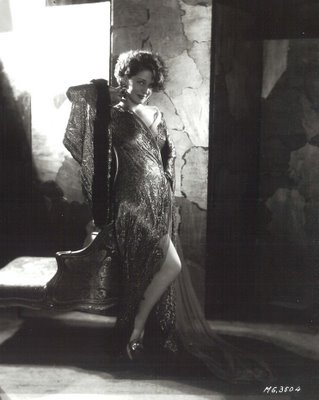
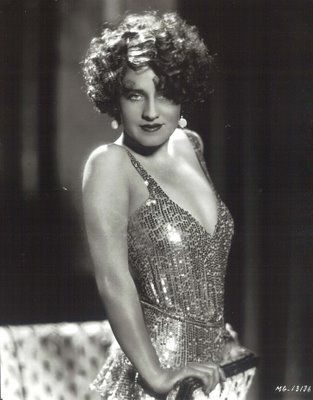
Monday Glamour Starter --- Norma Shearer --- Part Two
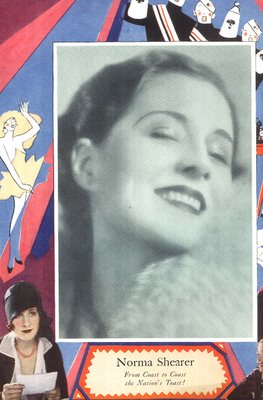
Having set her cap for Irving Thalberg, Norma endured any number of insipid parts in the silent features he produced with a saintly patience, hoping (or perhaps knowing) he would eventually marry her. Thalberg was another one of those dual personalities peculiar to Hollywood. That stuff about his being a genius supervisor seems to have been on the level. They say you could take an insurmountable story problem into his throne room, and minutes later, you'd have the solution. He sat on the repair bench for virtually every picture Metro released during the early thirties. Any employee who thought he/she was last leaving the lot at night would look up and see Thalberg’s office lights still burning. When he’d finally get home, Mother would have pajamas neatly laid upon his bed. The matriarchal influence extended to dates as well --- it was strongly suggested that marriage to Carl Laemmle’s daughter Rosabelle would be a useful alliance, but this mating of eagles would not take place. Neither would a union with Constance Talmadge, which would have netted in-law status with Joseph Schenck, Norma Talmadge, and Buster Keaton, among others. Instead, Thalberg wed Norma Shearer, thus rescuing Irving from Mother’s permanent clutches (although she’d remain a powerful influence) and providing Norma a career impetus that rescued her from the fate of a Constance Talmadge, whose own star blinkered out as soon as talkies arrived.
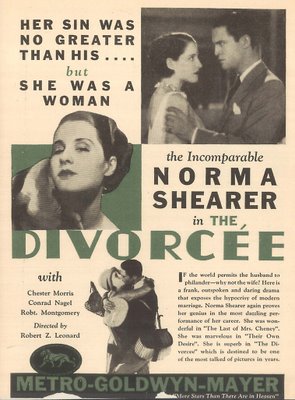
These sexed-up portraits of Norma were the fruit of her collaboration with photog George Hurrell, and the story goes she furtively arranged to have them taken, then flung the sizzling portfolio into Thalberg’s lap one morning at the breakfast table. Torrid pre-code Norma was thus born that day. Makes a good story whenever you’re introducing The Divorcee or Strangers May Kiss, and who knows, it may even be true. The trade ad shown here confirms her status. Serious studio rivals were Joan Crawford and Greta Garbo --- Crawford more so because hers was a bitter competition --- neither woman enjoyed being one-upped. You can only imagine what it was like when these two passed one another in make-up. Their mutual antipathy was probably borne of the fact that they’d both been cut from similar bolts of cloth --- gentility on the surface, ferocious ambition within. Today’s workplace tensions would no doubt seem prosaic beside the ongoing struggles at Metro.
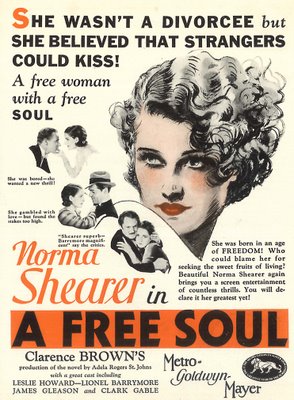
Kitty Carlisle rented Norma’s beach house one summer and availed herself of an attic search during a rainy afternoon. This was some years after Norma’s retirement, and what Kitty found was the King Solomon’s Mine of Shearer ephemera --- dresses, scrapbooks, more dresses, many more scrapbooks --- all of it hidden behind a locked door and no doubt discarded when Norma eventually sold the place. What becomes of a star’s treasures once stardom's gone? If they make it to old age, are there even any fans left to care? Norma may have asked herself that question during those forty years following her final screen appearance (here she is with Dick Powell and June Allyson on a mid-fifties skiing holiday). Thalberg had died in 1936 when he was only thirty-seven, leaving Shearer to the tender mercies of Louis Mayer --- he and fellow execs tried to hoodoo her out of the percentage deal Irving had wangled out of Loew’s a few years before. This is where Norma’s steely resolve asserted itself, and her very public battle with studio brass ultimately yielded the lifetime of gravy she had coming (forty years later, she’d still conduct inquisitions of MGM bookkeepers --- even chiding them for failure to mount a seventies re-issue of that "sure money-maker", the silent Ben-Hur!).
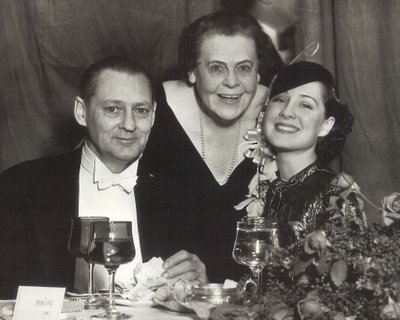
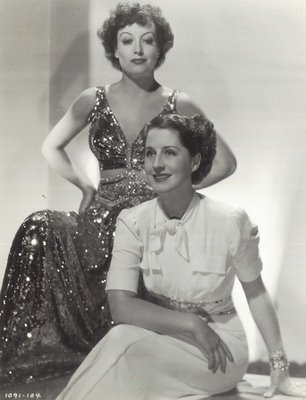

If you’d been a Nibblers patron during the seventies, chances are you would have seen Norma and her second husband (the ski instructor) having lunch at the counter. Up until then, they were fairly active socially. Norma even got down with the latest dances --- imagine her doing the twist in a sixties club --- yet there she was, and Shearer sightings around town were not uncommon. She’d aged, but not alarmingly so. Still, she was consumed with the dread of aging, and of sharing her sister’s fate. Friends who’d shown Norma home movies in which she appeared were later besieged with letters asking that unflattering footage be edited out, and while sister Athole (pronounced "Ethel") found relief through recently available medications, Norma herself would be plunged into depression and the same sanitarium her sibling had occupied. Brother Douglas Shearer, longtime sound engineer at Metro, seems to have been spared the family curse, and lived into a peaceful old age (he died in 1971). Norma became increasingly addled in later years --- she wrote angry letters to MGM when they included but a glimpse of her in 1974’s That’s Entertainment, and regularly drove dinner guests over to the Culver City for yet another screening of Marie Antoinette, her favorite of the Norma films. She’d been calling her husband "Irving" for some time, and finally, after she’d been placed in the Motion Picture Country Home, she greeted every man the same way, Are you Irving? --- Were we married once? That’s where she died, in 1983. Shearer was at least eighty, maybe more, perhaps less, depending on which account you believe. She died too soon to enjoy the Norma pre-code renaissance that would come in the following decade, joining that circle of greats, including Bela Lugosi, Oliver Hardy, and a few others who just missed the applause of a whole new generation of fans.